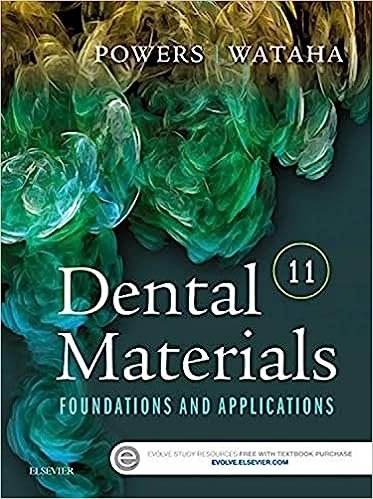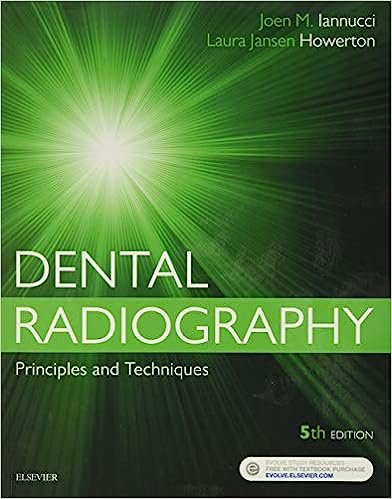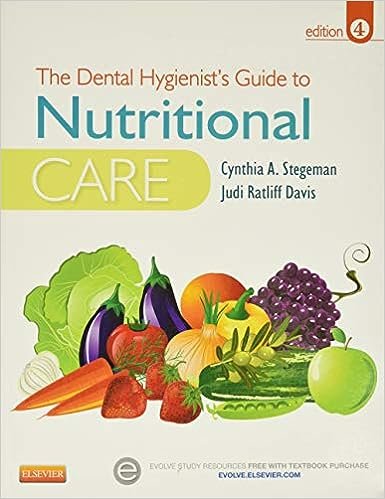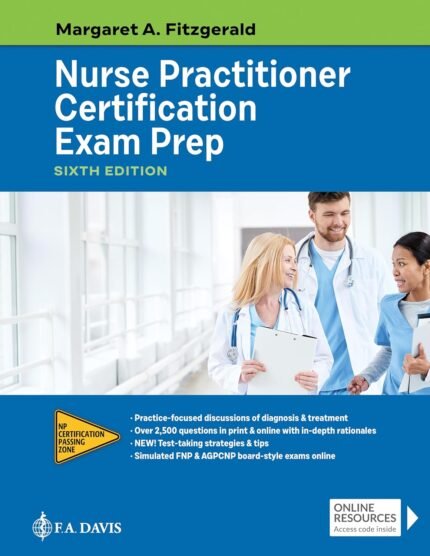Test Bank for Dental Materials 3rd Edition by Hatrick
Chapter 07: Preventive and Desensitizing Materials
MULTIPLE CHOICE
- The accepted optimal level of fluoride in drinking water is in the range of ____ mg/L or parts per million.
| a. | 0.01 to 0.07 |
| b. | 0.07 to 0.12 |
| c. | 0.12 to 0.7 |
| d. | 0.7 to 1.2 |
ANS: D
The accepted optimal level of fluoride in drinking water is in the range of 0.7 to 1.2 mg/L or parts per million. Consumption of excess fluoride during the formation of the teeth may lead to a condition known as fluorosis. Severe fluorosis can cause brown staining and pitting of the enamel surface.
REF: p. 97 TOP: Fluoride
- Where is fluoride’s greatest anticaries benefit gained?
| a. | Topical fluoride exposure before eruption |
| b. | Systemic fluoride exposure before eruption |
| c. | Topical fluoride exposure after the teeth have erupted |
| d. | Systemic fluoride exposure after the teeth have erupted |
ANS: C
Fluoride’s greatest anticaries benefit is gained from topical fluoride exposure after the teeth have erupted. Fluoride in the saliva surrounding the tooth is incorporated into the surface of enamel crystals during remineralization to form a surface veneer containing fluorapatite that has much lower solubility than the original tooth mineral.
REF: p. 98 TOP: Fluoride (Topical and Systemic Effects)
- Which of the following are true concerning fluoride and bacterial inhibition?
- The fluoride ion freely crosses the bacterial cell wall.
- Some of the fluoride present in plaque fluid combines with the hydrogen ion of the acid to become hydrofluoric acid.
- Hydrofluoric acid diffuses into the cell.
- Once in the acid cytoplasm of the cell, the hydrofluoric acid separates into the fluoride ion and the hydrogen ion.
| a. | 1, 2, 3, 4 |
| b. | 1, 2, 3 |
| c. | 2, 3 |
| d. | 1, 4 |
ANS: C
Some of the fluoride present in plaque fluid combines with the hydrogen ion of the acid to become hydrofluoric acid, and hydrofluoric acid diffuses into the cell. The fluoride ion, however, has been shown not to cross the bacterial cell wall, and once in the alkaline rather than acid cytoplasm of the cell, the hydrofluoric acid separates into the fluoride ion and the hydrogen ion again. These ions disrupt the enzyme activities essential to the functioning of bacteria and cause their death.
REF: p. 98 TOP: Fluoride (Bacterial Inhibition)
- Which of the following is the most commonly noted side effect of the use of chlorhexidine gluconate as an antibacterial mouth rinse?
| a. | Leukoplakia |
| b. | Brown stain |
| c. | Geographic tongue |
| d. | Median rhomboid glossitis |
ANS: B
Brown stains may form on the teeth and tongue; on glass ionomer, compomer, and composite restorations; and on artificial teeth. Chlorhexidine gluconate has a bitter taste and may affect the taste of some foods. Staining seems to be more rapid in some individuals. Diet and brushing habits are thought to play an important role in how rapidly staining occurs.
REF: p. 98
TOP: Fluoride (Fluoride and Antibacterial Rinses for the Control of Dental Caries)
- Which of the following is true concerning in-office fluoride application?
| a. | A 1-minute application is recommended by the ADA. |
| b. | The most commonly used fluorides come in the form of topical gels or foams that are applied for 1 minute in disposable trays. |
| c. | The 1-minute application delivers approximately 25% of the fluoride that a 4-minute application delivers. |
| d. | When used one to two times a year, topical fluoride treatments have been shown to produce 20% to 26% caries reduction. |
ANS: D
When used one to two times a year, topical fluoride treatments have been shown to produce 20% to 26% caries reduction. The most commonly used fluorides come in the form of topical gels or foams that are applied for 4 minutes in disposable trays. A 1-minute application is not recommended by the ADA. The 1-minute application delivers approximately 85% of the fluoride that a 4-minute application delivers.
REF: p. 100 TOP: Fluoride (In-Office Fluoride Applications [Topical])
- What will occur if carious teeth are treated with sealants?
| a. | An acceleration of decay |
| b. | Complete reversal and elimination of all traces of decay |
| c. | An 11% reversal from a caries-active to a caries-inactive state |
| d. | An 89% reversal from a caries-active to a caries-inactive state |
ANS: D
Treatment of carious teeth with sealants resulted in an 89% reversal from a caries-active to a caries-inactive state. Those sites that remained carious had significantly fewer viable bacteria than unsealed carious control sites.
REF: p. 101 TOP: Pit and Fissure Sealants (Purpose)
- Which of the following types of adult teeth are most susceptible to fissure caries?
| a. | Upper lateral incisors and upper first premolars |
| b. | Upper and lower second premolars |
| c. | Lower molars |
| d. | Upper molars |
ANS: C
Teeth most susceptible to pit and fissure caries are listed in order of their risk for decay as follows: lower molars—about 50%, upper molars—about 35% to 40%, upper and lower second premolars, upper laterals and upper first premolars, and upper centrals and lower first premolars. Taken as a group, caries occurs most often in upper and lower molars, accounting for 85% to 90% of pit and fissure caries.
REF: p. 102 TOP: Pit and Fissure Sealants (Susceptibility of Teeth to Fissure Caries)
- Which of the following is true of the oxygen-inhibited layer on cured dental sealant?
| a. | It is the most thoroughly cured portion because it is closest to the curing light. |
| b. | It occurs because the set of the resin at its surface is inhibited by contact with oxygen in the air. |
| c. | It contains bisphenol, an estrogen-like chemical associated with precocious puberty. |
| d. | It allows the clinician to see and detect the presence of the sealant. |
ANS: B
It occurs because the set of the resin at its surface is inhibited by contact with oxygen in the air. It is a very thin film of uncured resin on the surface of the cured sealant. It causes no harm but should be wiped off with gauze or a cotton roll because it might have an unpleasant taste.
REF: p. 104 TOP: Pit and Fissure Sealants (Oxygen-Inhibited Layer)
- Which of the following are the teeth from which sealants are most frequently lost?
| a. | First premolars |
| b. | Second premolars |
| c. | First molars |
| d. | Second molars |
ANS: D
Sealants are most frequently lost from maxillary and mandibular second molars, probably because they are the ones for which it is difficult to maintain isolation when a rubber dam is not used. Additionally, moisture from the patient’s breath could coat the etched enamel and interfere with the bond of the sealant.
REF: p. 104 TOP: Pit and Fissure Sealants (Oxygen-Inhibited Layer)
- Which of the following is the worst type of sealant failure?
| a. | All of the sealant is lost. |
| b. | Part of the sealant is lost. |
| c. | The sealant remains in place but leaks. |
| d. | Too much sealant is placed, resulting in excess material in the contact between adjacent teeth. |
ANS: C
The worst failure is a sealant that leaks but remains in place. The leak can go undetected and can decay significantly underneath the sealant before it is detected. Most failures occur within the first 3 to 6 months, and all or part of the sealant comes off. Placing too much sealant can result in excess material flowing into the contact area between adjacent teeth. Once the sealant is cured, the contact area is blocked and the patient would not be able to floss in that area.
REF: p. 106 TOP: Pit and Fissure Sealants (Troubleshooting Problems with Sealants)










Reviews
There are no reviews yet.